Zone 6a has a moderate climate with minimum winter temperatures of -10°F to -5°F. It offers a medium-length growing season, making it ideal for spring and fall planting.
1.1 Understanding USDA Hardiness Zones
The USDA Hardiness Zones are a guide to help gardeners understand which plants can thrive in specific areas based on average annual extreme minimum temperatures. These zones are crucial for determining plant survival during harsh winters. Zone 6a, for example, has a minimum winter temperature range of -10°F to -5°F. This system allows gardeners to select plants suited to their local climate, ensuring better growth and survival rates. By understanding your zone, you can make informed decisions about planting times and plant selection, maximizing your gardening success. This knowledge is fundamental for effective gardening in Zone 6a.
1.2 Characteristics of Zone 6a
Zone 6a is characterized by a moderate climate with average winter temperatures ranging from -10°F to -5°F. It offers a medium-length growing season, typically lasting from mid-April to mid-October. This zone supports a wide variety of plants, including cool-season and warm-season crops. The first frost dates in fall and the last frost dates in spring are critical for determining planting schedules. Zone 6a’s climate is suitable for vegetables like beets, broccoli, and carrots, as well as fruits such as strawberries and blueberries. Understanding these characteristics helps gardeners optimize their planting strategies for success in this zone.
1.3 Importance of Zone-Specific Planting
Zone-specific planting is crucial for ensuring plants thrive in their local climate. Understanding Zone 6a’s unique conditions helps gardeners choose plants adapted to its temperature range and frost patterns. This reduces the risk of premature plant failure and maximizes the growing season. By aligning planting schedules with Zone 6a’s first and last frost dates, gardeners can optimize growth for both cool-season and warm-season crops. Zone-specific strategies also help in selecting varieties that mature within the available growing window, ensuring a bountiful harvest and healthier plants overall. This tailored approach is key to successful gardening in Zone 6a.

Climate and Growing Season in Zone 6a
Zone 6a experiences moderate winters and warm summers, with a growing season typically starting in mid-April and ending in mid-October. The first frost is around October 15th, and the last frost occurs near April 30th, offering a medium-length growing season of about 150-200 days.
2.1 Average Temperature Ranges
Zone 6a has a moderate climate, with average winter temperatures ranging from -10°F to -5°F. During the growing season, spring temperatures typically rise to 40°F by early April, reaching 60°F by late May. Summer months often see highs around 85°F to 90°F, while fall temperatures gradually cool to around 50°F by October. These temperature ranges create a balanced environment for planting a variety of crops, allowing gardeners to plan accordingly for both cool- and warm-season plants. Understanding these temperature fluctuations is key to optimizing planting schedules and ensuring healthy plant growth throughout the year.
2.2 First and Last Frost Dates
In Zone 6a, the average last frost date is around May 10th, while the first frost date typically occurs by October 1st. These dates are critical for planning, as they determine when it’s safe to plant tender seedlings outdoors. Gardeners should start seeds indoors 4-6 weeks before the last frost date to give plants a head start. After May 10th, warm-season crops like tomatoes and peppers can be transplanted. For fall crops, planting should begin in late summer to allow for maturation before the first frost. Understanding frost dates ensures optimal timing for successful planting and harvesting in Zone 6a.
2.3 Length of the Growing Season
In Zone 6a, the growing season typically lasts from mid-April to mid-October, providing approximately 150-160 frost-free days. This medium-length season allows gardeners to grow a variety of crops, including cool-season vegetables like broccoli and kale in spring and fall, as well as warm-season crops like tomatoes and peppers during summer. The season is long enough for most vegetables to mature before the first frost. However, exact dates can vary slightly depending on weather patterns. Understanding the growing season’s length helps gardeners plan planting schedules effectively and maximize productivity in Zone 6a.
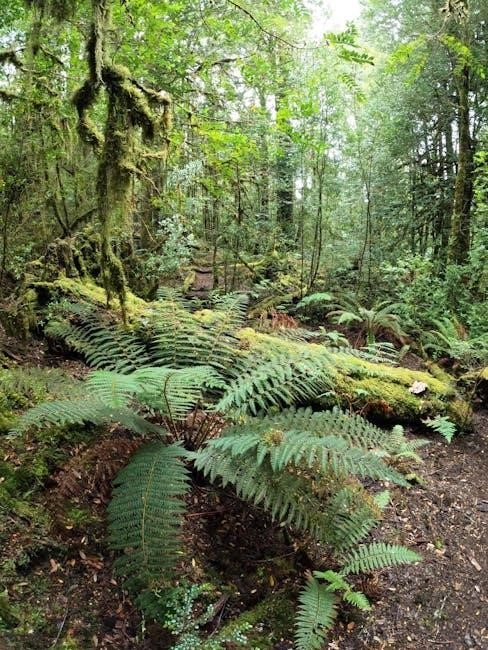
Essential Considerations for Planting in Zone 6a
Success in Zone 6a requires preparing soil, selecting climate-appropriate plants, and timing seed starts. Understanding these factors ensures optimal growth and productivity in your garden.
3.1 Soil Preparation
Soil preparation is critical for successful gardening in Zone 6a. Start by testing your soil to determine its pH level and nutrient content. Most plants thrive in a slightly acidic to neutral soil pH (6.0–7.0). Add organic matter like compost or well-rotted manure to improve soil fertility and drainage. Till the soil to a depth of 8–10 inches to loosen and aerate it, promoting healthy root growth. Incorporate amendments based on your soil test results, such as lime to raise pH or sulfur to lower it. Proper soil preparation ensures a strong foundation for your plants to grow and thrive.
3.2 Choosing the Right Plants
Selecting plants suitable for Zone 6a is essential for a thriving garden. Look for plants with a hardiness rating that matches or is lower than Zone 6a to ensure they can withstand local winters. Consider the specific growing conditions of your area, including sunlight, soil type, and moisture levels. Choose a mix of annuals and perennials to maintain year-round interest. Vegetables like tomatoes, peppers, and herbs grow well in Zone 6a’s climate. Ensure plants have enough time to mature within the growing season, typically 150–180 days. This careful selection will maximize your garden’s productivity and beauty.
3.3 Understanding Seed Starting
Seed starting is a crucial step for Zone 6a gardeners to get a head start on the growing season. Begin seeds indoors 4-6 weeks before the last frost date using a high-quality seed starting mix and grow lights. Harden off seedlings before transplanting outdoors to avoid shock. Timing is key—some plants like tomatoes and peppers thrive when started indoors, while others, like carrots, prefer direct sowing; Use soil blocks or seed trays for optimal root development. Keep the soil warm and moist during germination, and monitor light exposure to ensure healthy growth. Proper seed starting techniques will give your plants a strong foundation for success in Zone 6a.

Planting Calendar for Zone 6a
Zone 6a’s planting calendar spans from spring to fall, with cool-season crops planted in early spring and warm-season crops after the last frost. Fall crops thrive in late summer, and year-round opportunities exist for garlic and winter cover crops.
4.1 Spring Planting Schedule
Zone 6a’s spring planting schedule begins in late March to early April, starting with cool-season crops like spinach, lettuce, and radishes. By April, gardeners can direct-sow broccoli, carrots, and peas. May marks the transition to warm-season crops, with tomatoes, peppers, and zucchini planted after the last frost date. Beets and green beans thrive in Zone 6a’s spring climate, while herbs like cilantro and dill can be seeded in early spring. This period is ideal for establishing perennials and dividing bulbs, ensuring a vibrant and productive garden throughout the growing season.
4.2 Fall Planting Schedule
Zone 6a’s fall planting schedule typically begins in late summer, around August 1, with crops like beets and spinach. By September, gardeners can plant cool-season crops such as lettuce, kale, and radishes. Broccoli, Brussels sprouts, and cabbage thrive in Zone 6a’s fall climate, with planting ideally done 8-10 weeks before the first frost. Herbs like parsley and cilantro can also be seeded in early fall. The moderate temperatures allow for a second harvest of many vegetables, making fall a productive time for gardeners. Proper planning ensures a bountiful yield before winter sets in.
4.3 Year-Round Planting Opportunities
Zone 6a offers year-round planting opportunities with proper planning. Spring and fall are ideal for cool-season crops, while summer supports warm-season plants. Gardeners can extend the growing season using techniques like succession planting, cold frames, and indoor seed starting. Tools like planting charts and apps provide precise timing for sowing seeds. For example, crops like spinach and kale can be planted in early spring and late summer for dual harvests. Additionally, herbs and microgreens can be grown indoors during winter, ensuring fresh produce year-round. This versatility makes Zone 6a a rewarding location for gardeners of all levels.
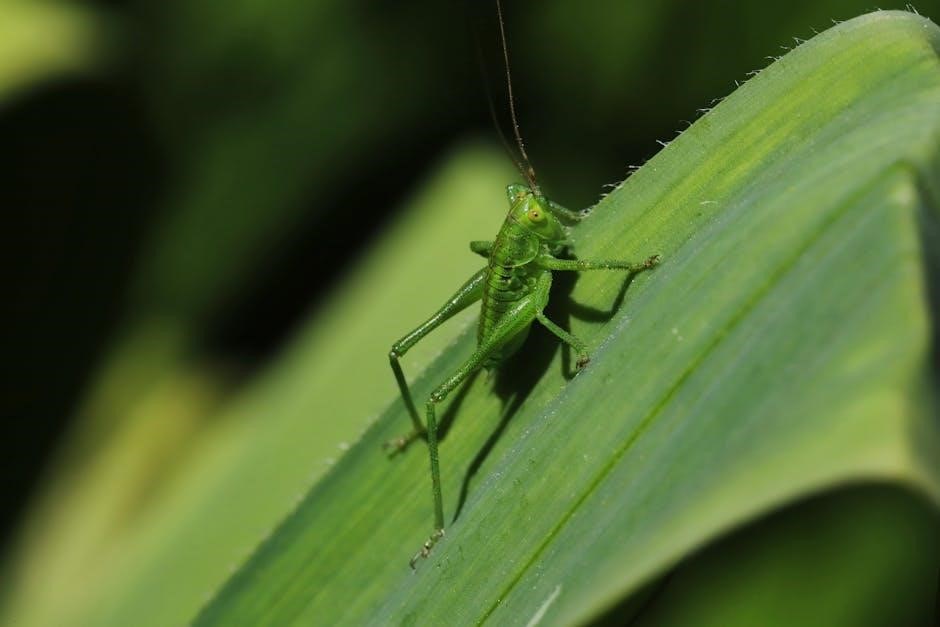
Vegetable Planting Guide for Zone 6a
Zone 6a’s moderate climate supports a wide variety of vegetables. Understanding the growing season and frost dates helps gardeners optimize planting times for optimal yields and flavor.
5.1 Vegetables to Plant in Early Spring
In Zone 6a, early spring is ideal for planting cool-season crops like spinach, kale, radishes, and carrots. These vegetables thrive in cooler temperatures and can tolerate light frosts. Plant seeds directly in well-prepared soil as soon as it becomes workable in late March or early April. Broccoli, cauliflower, and Brussels sprouts also perform well when started indoors 4-6 weeks before the last frost date and then transplanted outside. Beets and Swiss chard can be direct-sown in early spring for a bountiful harvest. These crops mature quickly, making the most of Zone 6a’s medium-length growing season.
5;2 Vegetables to Plant After the Last Frost
After the last frost date in Zone 6a, typically around late May, gardeners can plant warm-season vegetables. Tomatoes, peppers, and eggplants thrive when started indoors 4-6 weeks earlier and transplanted outside. Cucumbers, zucchini, and summer squash prefer direct sowing in well-warmed soil. Corn and beans also excel in Zone 6a’s post-frost conditions, benefitting from full sun and consistent moisture. For optimal growth, wait until soil temperatures reach at least 60°F before planting heat-loving crops like okra or pumpkins. Using row covers can extend the season for tender plants, ensuring a bountiful summer harvest.
5.3 Vegetables for Fall Harvest
Zone 6a gardeners can enjoy a bountiful fall harvest by planting cool-season vegetables. Broccoli, kale, spinach, carrots, and beets thrive in the cooler temperatures, with planting typically starting 8 weeks before the first frost. These crops mature quickly and can tolerate light frosts. Garlic is another excellent choice, planted in fall for a summer harvest. Using row covers can protect plants from early frosts, extending the harvest season. Fall gardening also benefits from warmer soil, which speeds germination, and fewer pests compared to spring. Plan your fall garden wisely to maximize your yield in Zone 6a.
5.4 Tips for Growing Tomatoes in Zone 6a
For successful tomato growth in Zone 6a, start seeds indoors 4-6 weeks before the last frost date, then transplant after the last frost in late May. Choose varieties with a maturity date of 70-90 days to suit the growing season. Provide full sun, well-draining soil enriched with compost, and support with cages or trellises. Water consistently, about 1-2 inches per week, and mulch to retain moisture. Monitor for pests like hornworms and diseases, using row covers to protect young plants. Fertilize with a balanced formula at planting and again during fruiting for optimal yields.
5.5 Growing Peppers in Zone 6a
Peppers thrive in Zone 6a’s moderate climate. Start seeds indoors 8-10 weeks before the last frost date, then transplant after the soil warms; Choose varieties like bell, jalapeño, or Anaheim, which mature within 70-90 days. Plant in full sun with well-draining soil. Water consistently, providing about 1-2 inches per week. Support larger pepper plants with cages or stakes. Mulch around plants to retain moisture and suppress weeds. Fertilize with a balanced formula at planting and again during flowering. Keep an eye out for pests like aphids and diseases, treating promptly with neem oil if necessary for a healthy harvest.
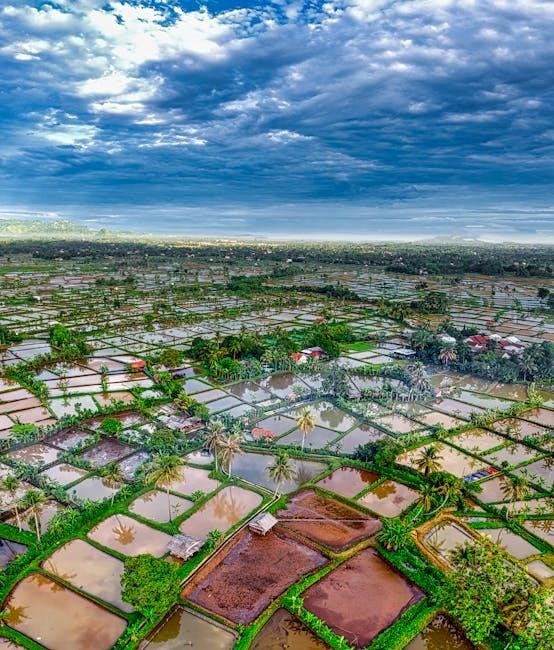
Fruit Planting Guide for Zone 6a
Fruit like strawberries, blueberries, and raspberries thrive in Zone 6a. Plant strawberries in early spring or fall for optimal results. Blueberries require acidic soil and consistent moisture.
6.1 Best Fruits for Zone 6a
In Zone 6a, strawberries, blueberries, raspberries, blackberries, and currants thrive due to the moderate climate. Apples and pears are also excellent choices, tolerating the temperature fluctuations. Grapes, especially cold-hardy varieties, grow well for wine and fresh consumption. These fruits are ideal for Zone 6a’s conditions, offering a diverse and productive harvest.
6.2 Planting Strawberries in Zone 6a
Strawberries thrive in Zone 6a’s climate, with optimal planting times in early spring (March-April) or late summer/early fall (August-September). Choose a sunny spot with well-draining soil and a pH of 5.5-6.5. Space plants 12-18 inches apart for proper growth. Water regularly, but avoid overwatering to prevent root rot. Mulch around plants to retain moisture and suppress weeds. Strawberries typically bear fruit within 60 days of planting. In Zone 6a, expect two harvests if using ever-bearing varieties. Proper care ensures a bountiful yield and healthy plants year after year.
6.3 Growing Blueberries in Zone 6a
Blueberries are a rewarding fruit to grow in Zone 6a, requiring acidic soil with a pH of 4.0-5.5 and consistent moisture. Plant in early spring or fall, choosing varieties like ‘Duke’ or ‘Bluecrop’ for reliability. Ensure full sun and space bushes 3-4 feet apart. Mulch around plants to retain moisture and suppress weeds. Blueberries need approximately 600 chilling hours, which Zone 6a’s winters provide. Avoid over-fertilization, as this can harm the plants. With proper care, blueberries will thrive, producing delicious fruit in mid-to-late summer. Regular watering and annual pruning will help maintain healthy growth and maximize yields.
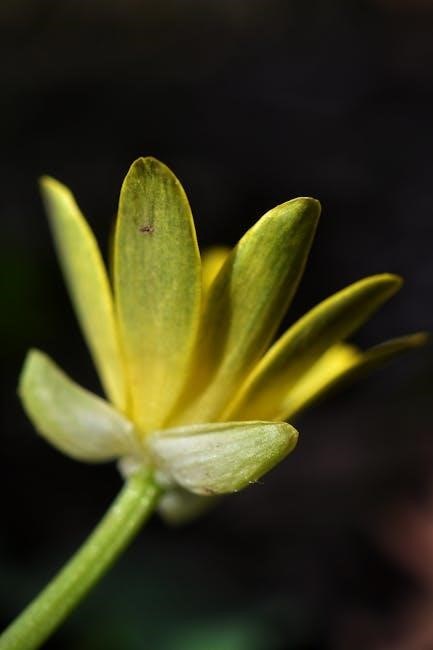
Flower Planting Guide for Zone 6a
Zone 6a’s moderate climate supports a wide variety of flowers. Annuals like marigolds and zinnias thrive in summer, while perennials such as coneflowers and black-eyed susans offer long-term beauty. Plant in well-drained soil with full sun for optimal growth.
7.1 Perennial Flowers for Zone 6a
Zone 6a gardeners can enjoy a variety of vibrant perennials that thrive in the region’s climate. Coneflowers, daylilies, and black-eyed susans are excellent choices, offering colorful blooms and low maintenance. Hydrangeas and salvia also perform well, adding beauty and attracting pollinators. Hostas and coral bells provide stunning foliage, while peonies and lavender deliver fragrant blooms. Plant perennials in well-drained soil and full sun for optimal growth. Water regularly during the first growing season and mulch to retain moisture. Deadhead flowers to encourage repeat blooming and divide plants every few years to maintain health and vigor. These perennials create a lasting, dynamic garden display.
7.2 Annual Flowers for Zone 6a
Annual flowers add vibrant color and texture to Zone 6a gardens. Popular choices like marigolds, zinnias, and petunias thrive in the region’s climate. Sunflowers and cosmos provide tall, striking blooms, while snapdragons and pansies offer variety. Plant annuals after the last frost date in well-drained soil and full sun. Sow seeds directly or start seedlings indoors 4-6 weeks earlier. Water consistently and fertilize lightly for robust growth. Deadhead flowers to extend blooming periods. Annuals are perfect for filling gaps in perennial beds or creating dynamic container displays. They attract pollinators and brighten the garden throughout the growing season.
7.3 Bulbs to Plant in Zone 6a
Bulbs are a fantastic choice for Zone 6a gardens, offering vibrant blooms and hardiness. Daffodils, tulips, and hyacinths are popular options, thriving in the region’s cool winters and warm summers. Plant bulbs in early spring or fall, ensuring well-drained soil and full sun. Follow specific planting depths for each variety. Spring-blooming bulbs like crocuses and grape hyacinths naturalize easily, while summer-blooming lilies and dahlias add color later in the season; Deadhead flowers after blooming to direct energy back to the bulb. Proper care ensures these beauties return year after year, creating a dynamic display of color in your garden.

Herb Planting Guide for Zone 6a
Zone 6a gardeners can grow a variety of herbs, including basil, rosemary, and thyme. Plant in well-drained soil with full sun for optimal growth and flavor.
8.1 Herbs to Plant in Zone 6a
Zone 6a is ideal for growing a variety of herbs, including basil, rosemary, thyme, parsley, and mint. Cool-season herbs like dill, cilantro, and chamomile thrive in spring or fall. Perennial herbs such as oregano and sage can be planted in early spring or late summer for a head start. Annual herbs like basil and dill should be planted after the last frost date. Ensure well-drained soil and full sun for most herbs. Regular watering and proper spacing will promote healthy growth and flavorful harvests throughout the growing season.
8.2 Growing Herbs Indoors
Growing herbs indoors in Zone 6a is a great way to enjoy fresh flavors year-round. Choose herbs like basil, mint, parsley, and chives, which thrive in indoor conditions. Provide bright, indirect light, and maintain temperatures between 65-75°F. Use well-draining potting soil and water sparingly to prevent root rot. Fertilize monthly with a balanced fertilizer for optimal growth. Containers with drainage holes are ideal to ensure healthy root development. Prune regularly to encourage bushy growth and prevent legginess. Indoor herb gardens are perfect for continuous harvesting, even during winter, making them a convenient and rewarding addition to any Zone 6a gardener’s routine.
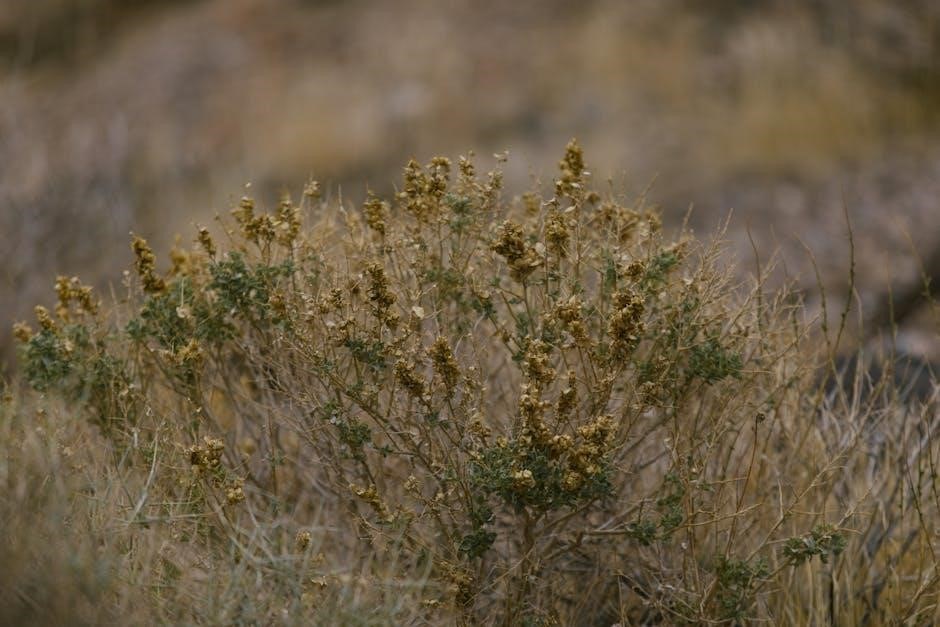
Common Challenges in Zone 6a
Frost, pests, and soil quality are significant challenges in Zone 6a. These issues require targeted strategies to ensure healthy plant growth and a successful harvest season.
9.1 Dealing with Frost
Frost is a significant challenge in Zone 6a, with the last spring frost occurring around May and the first fall frost happening in late September. Protecting plants during these periods is crucial. Use frost blankets or covers to shield tender seedlings and crops. Cold frames and hoop houses are excellent for extending the growing season. Monitor weather forecasts to prepare for unexpected frosts. Plant frost-sensitive varieties after the last frost date to ensure survival. Selecting frost-tolerant plants can also mitigate damage. Proper planning and protection are essential to safeguard your garden from frost-related losses.
9.2 Managing Pests and Diseases
In Zone 6a, common pests like aphids, slugs, and snails can damage plants. Regularly inspect plants and use organic methods like neem oil or diatomaceous earth to control infestations. Diseases such as powdery mildew and root rot can thrive in moist conditions. Ensure good air circulation, remove infected plants, and treat with fungicides when necessary. Crop rotation and proper sanitation are key to preventing pest and disease buildup. Healthy soil and strong, well-nourished plants are more resistant to pests and diseases, making preventative care essential for a thriving garden.
9.3 Soil Quality Issues
In Zone 6a, soil quality can vary, with issues like poor drainage, nutrient deficiencies, or compacted soil affecting plant growth. Testing soil annually helps identify pH levels and nutrient needs. Adding organic matter like compost or manure improves soil structure and fertility. Proper tillage can alleviate compaction, while mulching retains moisture and suppresses weeds. Addressing soil quality issues ensures healthier plants and better resistance to pests and diseases. Regular maintenance and sustainable practices are key to maintaining optimal soil health for productive gardening in Zone 6a. Consistent care ensures long-term soil vitality and garden success.

Tools and Resources for Gardeners in Zone 6a
Gardeners in Zone 6a can utilize planting charts, apps, and local nurseries for guidance. Online resources and gardening communities offer valuable tips and support for successful gardening.
10.1 Planting Charts and Apps
Planting charts and apps are essential tools for Zone 6a gardeners, providing detailed schedules for sowing, planting, and harvesting. Resources like the Kellogg Garden Zone Planting Charts and Burpee’s interactive calendar allow gardeners to input their zip code for personalized planting guidance. These tools often include frost date calculators, seed starting timelines, and specific advice for vegetables, fruits, and flowers. Apps like Garden Plan Pro or Seed Starting Calculator offer additional features, such as weather advisories and planting reminders, helping gardeners optimize their growing season and make informed decisions.
10.2 Local Nurseries and Gardening Communities
Local nurseries and gardening communities are invaluable resources for Zone 6a gardeners. Nurseries often carry plants specifically suited to the local climate and soil conditions, ensuring better growth and survival. Staff typically offer expert advice tailored to Zone 6a challenges, such as frost management and soil preparation. Gardening communities, including local clubs and online forums, provide a space for sharing knowledge, tips, and experiences. Many communities organize workshops, seed exchanges, and planting events, fostering collaboration and learning among gardeners. Engaging with these networks can significantly enhance your gardening success in Zone 6a.
10.3 Online Resources for Zone 6a Gardeners
Online resources provide Zone 6a gardeners with tailored guidance and tools. Websites like Burpee offer interactive planting calendars, allowing gardeners to input their zip code for personalized advice; The Kellogg Garden Zone Planting Charts and Homestead and Chill’s planting calendar are excellent for planning sowing, planting, and harvesting timelines. Online forums and social media groups dedicated to Zone 6a gardening foster community sharing of tips and experiences. Additionally, apps like Gardening Assistant and PlantSnap offer real-time advice and plant identification, making them indispensable tools for successful gardening in Zone 6a.
Zone 6a offers a moderate climate, ideal for diverse gardening. By using tailored resources and planning, gardeners can maximize their growing season and enjoy successful harvests year-round.
11.1 Final Tips for Successful Gardening in Zone 6a
For thriving in Zone 6a, start seeds indoors 4-6 weeks before the last frost date and transplant after danger of frost has passed. Ensure soil is well-prepared with organic matter for optimal growth. Utilize frost blankets for tender plants and stagger planting dates to extend harvest seasons. Keep a gardening journal to track progress and plan future plantings. Always refer to updated planting charts and local nursery advice for region-specific guidance. By following these strategies, gardeners in Zone 6a can enjoy bountiful and diverse harvests throughout the growing season.
11.2 Encouragement to Share Gardening Experiences
Gardening in Zone 6a is a rewarding journey, and sharing your experiences can inspire others! By connecting with local gardening communities or online forums, you can exchange tips, learn from others, and gain insights into region-specific challenges. Consider documenting your progress through blogs or social media to showcase your successes and lessons learned. Sharing knowledge fosters a stronger gardening community and helps everyone grow more effectively. Don’t hesitate to participate in workshops or seed exchanges to further enrich your gardening practice and inspire fellow gardeners in Zone 6a.